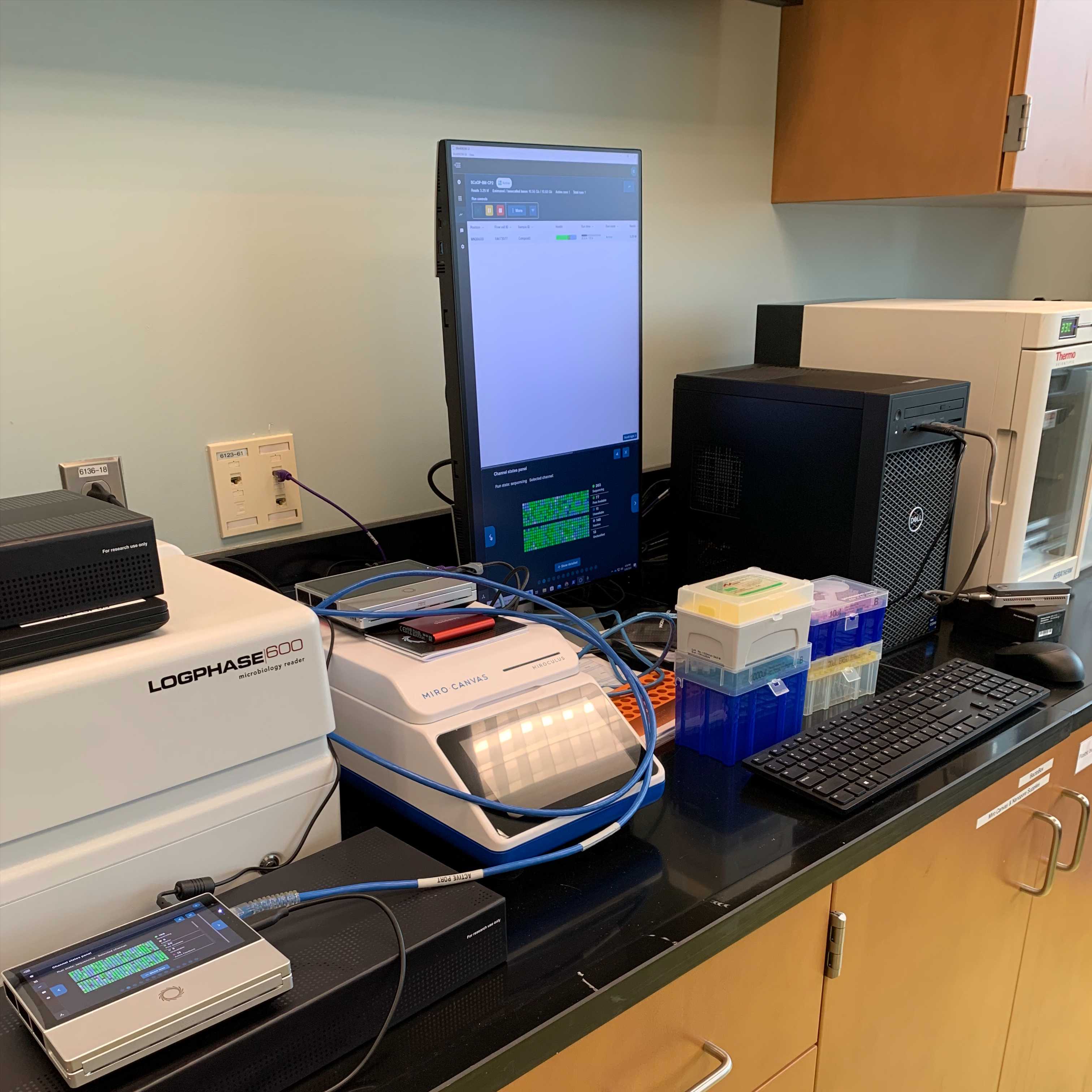Jan 03, 2025
Version 3
Plate Streaking V.3
- 1Biotechnology Teaching Program (BIT), North Carolina State University;
- 2North Carolina State University

External link: http://go.ncsu.edu/bits
Protocol Citation: Carlos Carlos Goller, Carly Sjogren 2025. Plate Streaking. protocols.io https://dx.doi.org/10.17504/protocols.io.dm6gpjw1jgzp/v3Version created by Carlos Carlos Goller
License: This is an open access protocol distributed under the terms of the Creative Commons Attribution License, which permits unrestricted use, distribution, and reproduction in any medium, provided the original author and source are credited
Protocol status: Working
We use this protocol, and it's working
Created: January 27, 2023
Last Modified: January 03, 2025
Protocol Integer ID: 117632
Keywords: bacteria, plate streaking, growth
Funders Acknowledgements:
Biotechnology Program
Grant ID:
Disclaimer
This protocol is used
Abstract
Overview and Goals
Streaking bacteria on agar plates allows scientists to obtain isolated colonies of bacteria. An isolated colony provides up to 108 bacteria cells that are genetically identical. This is why we call them clones or refer to them as colonies. The medium we chose to streak out bacteria must provide the nutrients required for prolific organismal growth, and not all bacteria require the same nutrients. There are various media types, and we will use Tryptic Soy Agar (TSA) plates to grow your bacteria, which may or may not support their growth.
Learning Objectives
After completing this lab, you will gain the following lab skills:
- Lab safety and proper personal protective equipment (PPE)
- Proper use of equipment: bacterial cell culture incubator
- Bacterial plate streaking
- Bacterial plate incubation
Image Attribution
Petri dish by Jakob Vogel
Purchased from The Noun Project
Guidelines
Safety
We are working with live bacterial organisms. Be careful not to contaminate your plate or spread the organism to surfaces. Wear gloves and eye protection for all steps.
Reducing Waste
To reduce unnecessary waste, we will tips for this activity. You can use the same tip to streak each plate. Then, switch tips for every isolate.
Materials
- Sharpie pen
- Wipes
- Sterile inoculation loops, Biolog Streakerz, or tips
- Pens and lab markers
- Bacterial culture source
- Inoculate plate with tryptic soy agar (TSA) medium
Safety warnings
Follow all instructions provided by instructors. All tips, loops, and gloves will go into biohazard bins.
Ethics statement
This protocol does not involve animals.
Before start
Preparation
Learn how to perform bacterial plate streaking to obtain isolated colonies.
- Read this article to learn about ways to streak a plate to obtain isolated colonies: Streak Plate Method- Principle, Types, Methods, Uses (15 min)
- Practice with a pen and paper the “Quadrant Streaking Method.”
Figure 1. Illustration of plate with bacterial colonies. The plate is labeled with isolate #, Team #, Initials, and date (mm/dd/yyyy). Illustration created with BioRender.com.
Figure 2. Diagram with steps for streaking a plate.
1) Obtain a new sterile inoculation loop
2) Collect bacteria onto loop
3) Inoculate plate
4) Streak plate using new loop between streaks
5) Observe formation of discrete colonies
Illustration created with BioRender.com.
Procedure for plate streaking
Procedure for plate streaking
1d 0h 32m 30s
1d 0h 32m 30s
Obtain a fresh Petri dish containing tryptic soy agar (TSA) medium.
5m
Label the bottom of the plate (the side containing TSA medium) keeping to the circumference (write on the edge, not in the center) with your bacterial isolate#, your Team#, your initials and today's date. See the diagram below for a visual example. If the surface of the plate is wet, dry it off using a chemical wipe.
5m
Obtain a sterile loop, tip, or Streakerz.
3m
Inspect the plate with the bacterial isolate you will characterize.
2m
Using the sterile plastic loop, touch the loop to a single colony on your bacterial source plate.
30s
Streak the bacteria on the loop onto your labeled inoculate plate following the inoculation procedure illustrated above.
15m
Put your lid back on your plate, turn it upside down (lid facing the benchtop) and bring it to the incubation chamber.
2m
Incubate your bacterial plate overnight with the goal of obtaining single isolated colonies.
This would be the result
Photo of two BUG agar plates (Biolog) with Comamonas terrigena (left) and Comamonas testosteroni (right) held by gloved hands. The plate on the right shows growth in all four streaks. Photo taken by BIT 295 Staff.
Note
Critical Thinking Questions
1. When plating bacteria, why do you think the last of the successive streaking turns will result in individual colonies as opposed to thick lines of bacteria seen at the beginning?
2. Why do you think researchers put plates into an incubator upside down (lids on the bottom)?
1d
Acknowledgements
We appreciate the support from the NC State Biotechnology Program and students who have helped improve this and other protocols.
